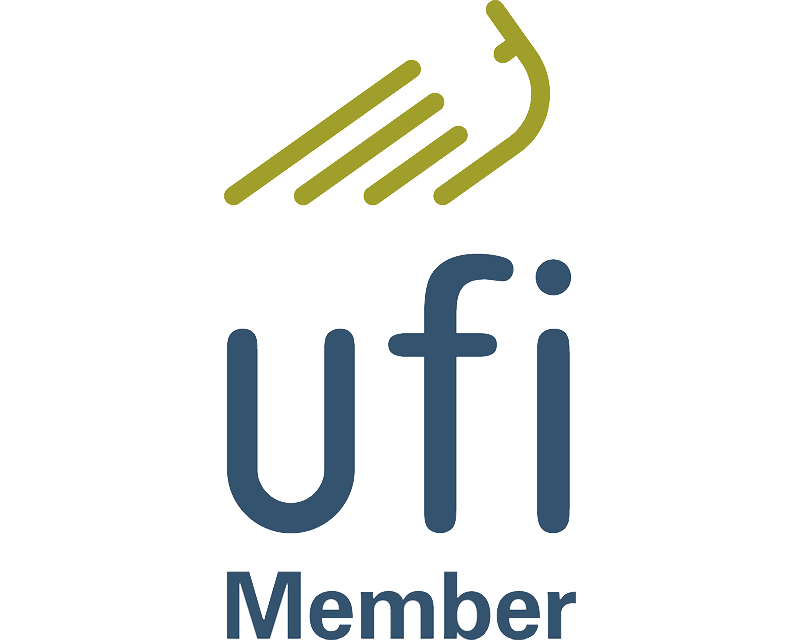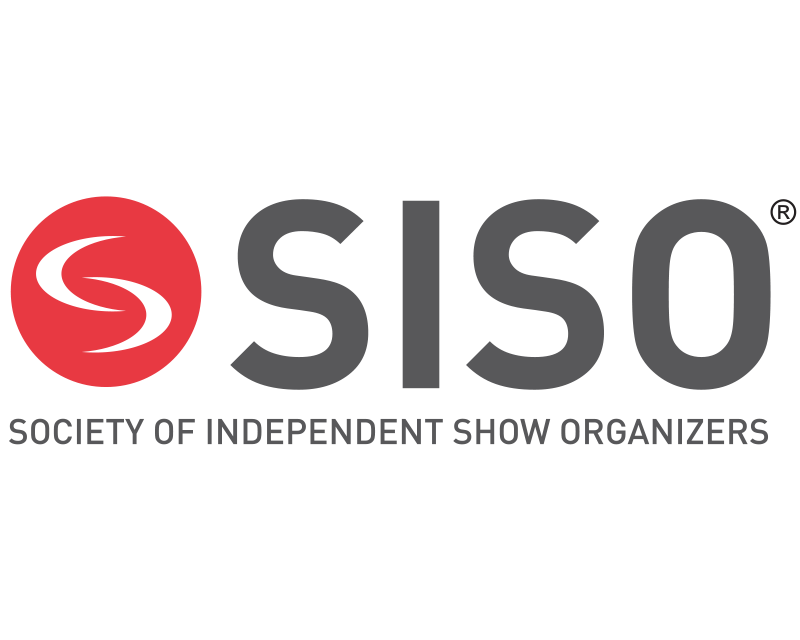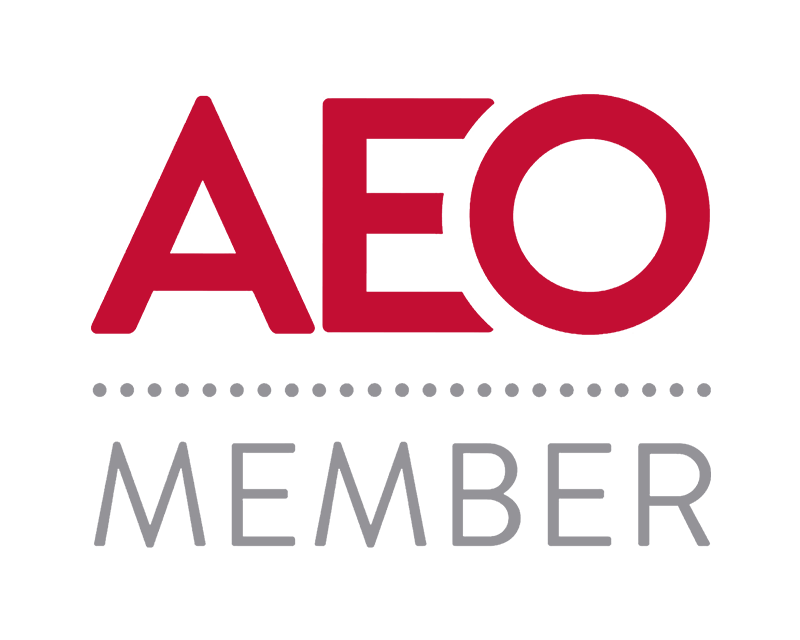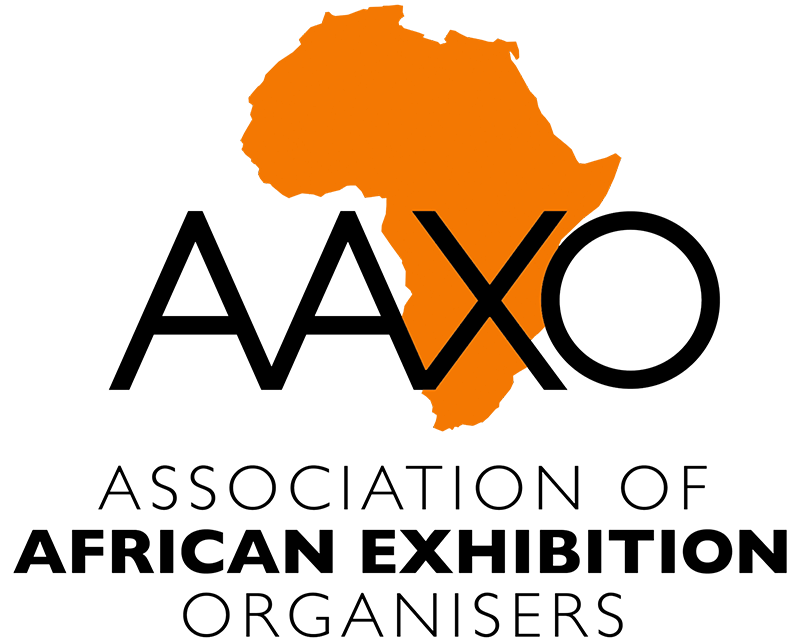2023 Knowledge Bar Program
DAY 1 Tuesday, May 09, 2023
11:30 AM
Commercial Deployment of a New Carbon Capture Technology
Knowledge Bar
Commercial Deployment of a New Carbon Capture Technology
Tuesday, 09 May 2023
11:30 AM
Exhibition Hall
Human society is facing a global carbon-climate crisis. We are emitting more CO2 and other GHGs than the earth’s forests, oceans, and other natural systems can absorb. The consequences are increasingly evident, well documented, and dire. To fight the challenge ahead, we must move quickly to retool the carbon-based global economy of the past 150 years. Svante is committed to landing nature a hand by preventing the CO2 generated by the worlds key industries from entering the atmosphere. With a capital cost at less then half of existing technologies, Svante makes industrial scale carbon capture a reality with its market-ready and commercial-scale solutions, making a Net-Zero emissions goal achievable. Svante offers an non-intrusive end-of-the-pipe solution for existing industrial infrastructure to deliver pipeline-ready CO2 for safe storage at giga-tonne (GT) scale. Our carbon capture technology traps carbon produced from industrial flue gas emissions generated from the production of cement, steel, ammonia, aluminum, methanol and hydrogen. The unique modular and scalable design is pre-engineered and packaged for each application. The capacity is scalable in multiples of individual rotating adsorption machines (RAMs) either 30 tonnes per day (TPD) or 1,000 TPD size depending on the flue gas composition and product purity requirements. Future development will allow us to scale-up the RAM up to about 3,000 TPD to meet the giga-tonne scale challenge. Svante CO2 solutions are pre-engineered turnkey plants fully automated and customized for each application, including flue gas pre-treatment, RAM, and product CO2 dehydration & gas handling system. The battery limit of each balance of plant is site-specific and can be integrated with off-the-shelf storage, compression or liquefaction units depending on the CO2 usage.
12:30 PM
The Benefits of Drug Testing for Safety in the Work Place
Knowledge Bar
The Benefits of Drug Testing for Safety in the Work Place
Tuesday, 09 May 2023
12:30 PM
Exhibition Hall
Omega Laboratories will be presenting the benefits of conducting workplace drug testing for both employers and employees. They will outline the various solutions available commercially and introduce best practices based on risk tolerance as well as from a health and safety perspective. Additionally, they will discuss how their proprietary electronic and integration capabilities can help streamline and offer efficiencies in the screening process.
1:30 PM
Resourcing Solutions that Fuel Your Projects
Knowledge Bar
Resourcing Solutions that Fuel Your Projects
Tuesday, 09 May 2023
1:30 PM
Exhibition Hall
The energy industry continues to face major pressures due to rising labour costs and shortages of skilled labour, increased capital costs, and contractor disputes costing billions in project cost overrun and significant delays. As the energy sector expands, many companies are finding it difficult to resource projects effectively. 82% of energy recruiters have had at least 10% of their open positions unfilled for over three months . You are often faced with industry-wide talent shortage, long hiring processes, and complex job requirements to match your complex project needs. Team turnarounds are expensive and slow down project productivity; however, this welcomes new challenges for resourcing the right professionals to fuel your projects. Peter Lucas understands the unique challenges that come with finding the right person for complex project roles, and we have developed a proprietary approach, the Bench, that brings greater confidence to rounding out your project teams. The Bench was designed and developed in house and is the digital transformation tool that ensures you have the right people behind your projects. This data-driven platform, powered by our rigorous vetting process and project-focused personality testing, helps reliably predict performance and project outcomes. The Bench provides a holistic view of each candidate’s strengths, experience, and their performance in different environments. You can optimize the process by meeting our professionals through video introductions, getting to know the people behind the resumes. Peter Lucas employees have helped deliver on some of the largest projects across Canada. We drive results for our clients and proudly boast that in our 12 years in business over 90% of our clients are repeat customers. With a specific focus on building skills that transfer across industries, we understand and share the commitment to building strong, diverse teams that represent the communities where projects happen. We also recognize how challenging it is to build a talent pipeline that connects underrepresented groups with great industry opportunities. Building strong relationships within the communities ensures that traditionally underrepresented groups continue to grow their presence and impact. Our mission is to elevate our people to champion client interests while driving innovation and sustainability. Peter Lucas is proud to support important initiatives in the community that align with our values – Respect, Trust & Integrity, Pride, Courage, and Growth. At Peter Lucas, we bring decades of experience supporting the success of world-class engineering projects. Whether it’s our first project together, or the continuation of a long and successful relationship, we have built our company by delivering value our clients can trust and developing teams that provide safe, supportive, and empowering work environments for everyone, and we’re excited to continue in that tradition with you.
2:30 PM
Visualize it! Using Advanced Geospatial Technology and Custom Portals for Max Collaboration, Optimized Asset Management and Efficient Decision-Making – a Safer, Sustainable and More Cost-Effective Approach
Knowledge Bar
Visualize it! Using Advanced Geospatial Technology and Custom Portals for Max Collaboration, Optimized Asset Management and Efficient Decision-Making – a Safer, Sustainable and More Cost-Effective Approach
Tuesday, 09 May 2023
2:30 PM
Exhibition Hall
Gas and LNG facilities and pipelines are integral and essential infrastructure for the transport of Canada’s energy nationally and worldwide. Optimizing the management of these assets is vital. It enhances operational and maintenance management supports informative decisions making, allows for better communication and better protect the public and the environment. The main key to better asset management is data! High-resolution, current, accurate and detailed data. Traditionally, acquiring facility data involved deploying construction crews to access and assess the sites, quickly becoming costly and time-consuming for operators. Since most of these sites are remotely located, this also requires driving long access routes by off-road vehicles, introducing additional safety hazards along the way. In this presentation, we present a new approach to limit the number of boots on the ground, mitigate safety risks and add an enhanced interactive web-based visualization interface to optimize assets management and maximize team collaboration. The objective is to provide a safer and cost-saving alternative, as well as a sustainable solution that is collaborative and can be used in several asset management applications such as building IOT solutions, maintenance programs, digital transformation, security monitoring and digital twins. Using GIS and advanced geospatial technologies such as unmanned aerial vehicles (UAVs), aerial LiDAR, terrestrial and sub-surface systems (laser scanning, mobile mapping, Ground Penetrating Radar and 360 cameras) and more, GeoVerra can collect all kinds of data and then craft it into one seamless, tailored web portal, providing up-to-date data that can be accessed from any location. Our team of experts is making massive amounts of information more accessible than ever before to clients in nearly every department. Who is this for? Project managers, operations managers, area managers, site supervisors, engineers, and construction managers working with gas, LNG and pipeline projects or projects across all industries.
3:30 PM
LNG 101
Knowledge Bar
LNG 101
Tuesday, 09 May 2023
3:30 PM
Exhibition Hall
The Oil and Gas industry is undergoing transformation to reduce its carbon emissions in a bid by governments and regulatory bodies to move towards a net-zero future. Natural gas — traded globally as Liquefied Natural Gas (LNG) is anticipated to have an important part to play in the energy transition and the outlook for gas and LNG shows strong growth and resilience. In this webinar, we'll discuss the fundamentals of LNG including an overview of the value chain and it's key characteristics. We'll also highlight some of the major projects happening around the world that are set to boost the global LNG industry. What we will cover: • Important events in the history of LNG • Overview of the LNG supply chain • How LNG is produced • Hazards related to LNG production • Key characteristics of LNG • Main LNG production facilities worldwide • Major projects happening around the world Who are Capstone ITS? We are a full service training company, specializing in the delivery of high-quality and cost-effective technical writing, custom training, and competency management solutions. Our team of expert resources consult on all aspects of industrial training and process safety, offer cutting edge technology expertise, and agile project management methodologies to deliver an unparalleled training solution experience.
DAY 2 Wednesday, May 10, 2023
10:30 AM
Canadian Net-Zero LNG: A Feedstock for the Global Energy Transition and a Recovering Climate
Knowledge Bar
Canadian Net-Zero LNG: A Feedstock for the Global Energy Transition and a Recovering Climate
Wednesday, 10 May 2023
10:30 AM
Exhibition Hall
The First Nations Climate Initiative's (FNCI) Climate Action Plan was recently developed in collaboration with many First Nations, companies, civil society organizations and other levels of government to identify locally and globally significant opportunities to mitigate and adapt to climate change while positioning First Nations communities to be central actors in the decarbonized economy. It includes the pivotal role that transmission capacity plays in building a decarbonized economy across all sectors; the western Canada net-zero natural gas life cycle from production to liquefication to end use hydrogen production; new energy system technologies such as methane pyrolysis; and the contribution that Indigenous Nature Based Solutions make to offsetting residual emissions, and setting the stage for climate recovery while restoring lands that are the foundation of First Nations cultures.
11:30 AM
Lessons Learned: Partnering with First Nation Communities
Knowledge Bar
Lessons Learned: Partnering with First Nation Communities
Wednesday, 10 May 2023
11:30 AM
Exhibition Hall
With the recent emergence of Environmental, Social, Governance (ESG) policies and reporting requirements, many companies are now looking for support and alternatives when it comes to achieving lofty corporate goals. The recent Site Closure and Rehabilitation Programs in Alberta, British Columbia and Saskatchewan have brought to light the importance of Indigenous inclusion and have created an ongoing emphasis for continued Indigenous involvement. West Earth Sciences being an Indigenous owned entity also works regularly with several Indigenous partners; obviously this has its advantages and disadvantages. Jeremy would like to share his learnings and take aways from working with the Indigenous communities, with a goal of teaching our ESAA peers about the relationship between environmental services and the Indigenous community. The presentation will provide valuable intel on how to work with Indigenous communities. It will teach the attendees why having an Indigenous partner(s) should be emphasis! Topics will include: - What is the first step? - How do I identify which communities to work with? - How do I approach an Indigenous community? - I have a partnership, now what? - Do's and don'ts - Do Indigenous communities have different environmental concerns than their non-indigenous peers? - Etc.
12:30 PM
P-LNG, The New Low-Cost LNG
Knowledge Bar
P-LNG, The New Low-Cost LNG
Wednesday, 10 May 2023
12:30 PM
Exhibition Hall
The perceived lack of supply of natural gas is not the actual problem we face. Rather, access to the numerous supplies is the real problem. CanaGas has a rather simplistic solution. CanaGas has patented a new low-cost way to liquefy and transport natural gas using intermodal shipping containers to transport that gas. Biogas as well. Providing low-cost access to natural gas using the world’s existing intermodal infrastructure will have a profound positive effect on the world. To liquefy natural gas (or biogas) as pressurized-liquefied natural gas (P-LNG), requires 100-year old organic chemistry. With moderate pressure (80 to 90 Bar) and conventional refrigeration (-50 C down to -70 C), natural gas will fully liquefy. It only needs to be de-hydrated. No stripping of CO2, nitrogen, ethane, propane, or butanes is required. As a result, the CAPEX cost to liquefy is about 8% that of conventional LNG. OPEX costs are about 20% of LNG. To practically and feasibly transport P-LNG in a shipping container requires lightweight, low-temperature compatible, type-4 pressure vessels (tanks), nested inside and cocooned in fire-retardant polyurethane foam. Stainless steel tanks would be too heavy to be practical, and too costly be feasible. The CanaGas Intermodal Transport Module (ITM) has three (3) large type-4 tanks inside. With 30 m3 of volume, a 40-ft ITM will carry between 10 and 13.5 metric tonnes of natural gas gas as P-LNG, mainly dependant on temperature. This equates to approximately 500 Mscf and 650 Mscf in a single shipping container. An old Panamax containership with 2000 ITMs would carry 27,000 MT of gas. Any container port will do for offloading. The gas can then be delivered directly to an end customer. If desired, the same ITM can return with 20 MT of CO2 (no chilling required) for sequestration. No cleaning of the tanks is required between cargos. A CanaGas ITM will also make small scale (family farm) biogas production feasible. The biogas is compressed to 90 Bar, dehydrated and chilled to only -30 C. New low-cost CanaGas technology is used to separate the liquid CO2 from the liquid biogas at a hub facility to create carbon-negative methane. No chemical treatment is required. Using ITMs, most flaring of natural gas can be monetized. Due to the inherent safety of using robust intermodal shipping containers to transport P-LNG, similar ITMs are used for safe and efficient transport of ethylene, ethane, CO2, propane, propylene, methanol, DME, and ammonia. At the time of this abstract, CanaGas is working with DNV to test its tanks for general approval for ship application (GASA). Permits from DOT and transport Canada will follow shortly thereafter.
1:30 PM
Using Remote Sensing Technologies to Detect Methane Emissions throughout the Natural Gas Value Chain Production of LNG Producers
Knowledge Bar
Using Remote Sensing Technologies to Detect Methane Emissions throughout the Natural Gas Value Chain Production of LNG Producers
Wednesday, 10 May 2023
1:30 PM
Exhibition Hall
Exploration, production, refrigeration, liquefaction, transportation, storage, and regasification are all the stages of the LNG value chain before it reaches the end user. Each of these stages have a latent opportunity for malfunctions, shutdowns and other any other event that could result in an atmospheric emission. This is in turn, not only could represent a health and economic problem but also an environmental one. Therefore, companies associated with the LNG production have a priority of eradicating or minimizing the likelihood of emissions. GHGSat established the use of high-resolution microsatellites to detect methane sources from oil and gas (O&G) infrastructure. GHGSat™s first satellite, GHGSat-D, was launched in 2016, followed by its second satellite, GHSat-C1, in September 2020. Subsequently, a third satellite, GHGSat-C2, was launched in January 2021, and three additional ones, GHGSat-C3 through GHGSat-C5, in May 2022. In 2019, the company started flying an airborne version of the sensor. The main purpose of this paper to provide recent results from these platforms and discuss its utility within the LNG sector, particularly assisting in the identification and tracking of methane emissions along the value chain. GHGSat employs spectrometry principles to perform columnar measurements of methane concentration in excess of background concentration. This remote sensing technique, from inside and outside the atmosphere, relies in analyzing the amount of light absorbed by the gas at very specific spectral frequencies unique to methane. Since no single solution can provide complete coverage of O&G facilities affordably, GHGSat promotes the use of a combination of technologies working in a tiered approach, as this is increasingly recognized by the industry and governments as an efficient means to monitor infrastructure. GHGSat combines the same sensor at different altitudes (~500 km and ~2 km) to operate within a tiered approach. This presentation will provide recent samples of detections observed with the constellation of satellites at oil and gas infrastructure, including LNG facilities. In addition, this presentation will discuss results recent aircraft campaigns. Furthermore, details of a study showing the combination of these two sensors will be presented.
2:30 PM
Case Study on Solutions Helping Reduce Methane Emissions
Knowledge Bar
Case Study on Solutions Helping Reduce Methane Emissions
Wednesday, 10 May 2023
2:30 PM
Exhibition Hall
Midstream companies are looking to reduce their baseline emissions. The proposed federal regulatory framework is stringent. Companies are searching for available opportunities and deploying tested technologies, to help them reduce their overall emissions and may see value in case studies in what companies are implementing to meet this framework. TCI worked with a midstream company to see if there were challenges and hurdles they faced when they are implementing this incineration technology. This presentation will address their concerns or challenges around integration, cost of utilizing the technology versus continuing without and address what implementation of the technology looks like from the vendors perspective through case studies.
3:30 PM
Berthing Aid System
Knowledge Bar
Berthing Aid System
Wednesday, 10 May 2023
3:30 PM
Exhibition Hall
Prosertek developed Dockmoor software, which provide for one of the most advanced Berthing Aid System (BAS). This system provides for monitoring berthing and mooring operations at maritime terminals, providing information to improve operations and guarantee secure ship berthing, facilitating safe and effective operations. BAS is a comprehensive visualization system to provide real-time data on maneuvre status. This means that operators have greater information, making it possible to take corrective measures if established limits are surpassed. The information provided by DockMoor can be viewed through several platforms, such as a digital panel on the dock, remote laptop monitors, a monitor in the control room or through the website with remote access.
DAY 3 Thursday, May 11, 2023
10:30 AM
Achieving Optimal Results Through Direction and Support & Supporting Your Journey to Zero Through Online Safety Training
Knowledge Bar
Achieving Optimal Results Through Direction and Support & Supporting Your Journey to Zero Through Online Safety Training
Thursday, 11 May 2023
10:30 AM
Exhibition Hall
Purpose/Mission: "Achieving Optimal Results Through Direction and Support" "Supporting Your Journey to Zero Through Online Safety Training" Oil and Energy Industries have a fascinating mission, a vision, and a journey unlike other industries. When opposition comes in waves, and business decisions are made upon growth factors, economic, environmental, and safety risks, the choice to rise as a team is ours with direction, skills, education, tools, and the right support. “How do we focus on the right tools, direction, and support while assuring and maintaining governmental, industry and safety demands, together achieving a successful future affecting our industry, our company and us as individuals? “ Communication – Streamline Success “Those gaps - not seen vs those that are commonly known!” Those secret places that linger within our communication ORG structure, the different verbal languages created within different ORG’s mandates and job scope requirements especially that of Upstream, and Downstream. Within the specific confines of Upstream, the Operations vs. Maintenance we see an array of differences forming a calmness within our job scope, yet miscommunication often threatens our results and safety culture. The true battle lies underneath our job positions, scope, expectations, and verbal management. The languages that are necessary for departmental success are implemented and aligned to that which our company commitment, values and mission statement provide. It is evident to maintain and implement the means necessary to achieve safe results; outside support and direction is necessary. Data Streams – Complicated vs. Communicative “KPI’s, data and our forward motion!” Underneath the waves of data, and KPI’s reassuring our success is a systematic structure that is all too powerful connecting innovations and technology to real time results. The data from the field workers is valuable and often overlooked as work execution time is crunched to a minimum, yet not seen from the top of our KPI’s structure and data stream. Our KPI’s results heavily rely on the field workers having enough time to accomplish the extra needed paperwork, the skillsets to know what data we are collecting, and the technology to communicate the correct path of data collection. If the accuracy of the data is not collected carefully and maintained data and KPI’s integrity is at stake, in turn moving the company in the wrong direction. To achieve optimal results from our implemented KPI’s structure and compounding data streams, companies need extra support, and direction to merge complicated data into a quick and easy way of our data collection. Safety In the Workplace “Maximizing and sustaining your safety culture” A companies safety culture and safety results are a vital piece of information that is shared from the top down and bottom up. The everchanging safety industry leaves all companies in a state of constant change, often resulting in confusion and a continual culture of lessons learned. Streamlining safety specific information, and continual implementation of required online safety training is critical to a lifelong learning approach, assuring everyone is working as one team. From public relations to HR, operations to corporate; safety in the workplace is seen and utilized by all departments, making it one of the foundational pillars to achieving your company mission statement, and values. It is vital to have the correct support necessary to achieve results and maintain a healthy safety culture.
11:30 AM
Occupational Resiliency Plan for Drug Use
Knowledge Bar
Occupational Resiliency Plan for Drug Use
Thursday, 11 May 2023
11:30 AM
Exhibition Hall
Creating an evidence-informed occupational resilience plan with highly intensive and immersive inpatient program that builds Recovery Capital followed up with virtual continuing care. How to foster workplace solutions for employees with drug, alcohol, gambling, and prescription drug issues. How the system needs collaboration with Benefits Provider, Disability and HR Managers, Union Rep, EAP and Monitoring Programs to ensure the employer and employee needs are met. A brief review of what “Recovery Informed Workplaces” and “Recovery Management at Work” can assist employees sustain their recovery journey. A review of how to handle stigma associated with asking for help will be looked at with a workplace lens in the oil and gas industry based on lived experience.
12:30 PM
The Use and Adoption of the ASCE 38-22 in the Energy Sector
Knowledge Bar
The Use and Adoption of the ASCE 38-22 in the Energy Sector
Thursday, 11 May 2023
12:30 PM
Exhibition Hall
This session will look at different field investigation techniques and the interpretation of the results for the STANDARD GUIDELINE FOR INVESTIGATING AND DOCUMENTING EXISTING UTILITIES (ASCE 38-22). Equipment and methodology including; pipe and cable locators, advanced geophysics (MCGPR), vacuum excavation. Specific issues related to the interpretation of raw field data and understanding of the methodology. Professional interpretations of the results and understanding how to apply the quality levels as described in the ASCE-38 Standard. Summary reporting and understanding how to provide reliable data for the intended design. This session will include the use of meta data and how to apply it to your utility investigation.
Beware of email scams
DMG Events has been informed from several exhibitors are receiving scam emails . Please be aware these offers are fraudulent. These scammers do not have any relationship with DMG Events.In accordance with GDPR, CASL and other jurisdictional data privacy regulations, DMG Events will never sell your data to any third party organisations. Please see our Privacy Policy for more information regarding how DMG Events will process and store your information.





















